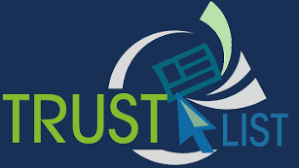
Implementing a robust Corrective and Preventive Action (CAPA) system is critical for the pharmaceutical industry. A well-designed CAPA system helps ensure compliance, improve product quality, and enhance operational efficiency. In this blog, we will explore top strategies for implementing an effective CAPA system in the pharma industry. We will focus on the essential aspects of CAPA in Manufacturing and discuss relevant CAPA examples to illustrate best practices. Additionally, we will delve into CAPA FDA requirements and address NC CAPA processes to provide a comprehensive guide.
In the pharmaceutical industry, CAPA in manufacturing is crucial for maintaining product quality and safety. It helps identify, investigate, and resolve issues that could potentially lead to non-conformances, ensuring that corrective and preventive actions are taken to prevent recurrence.
Implementing an effective CAPA system involves several key elements, including:
Identifying the root cause of issues
Developing and implementing corrective actions
Monitoring the effectiveness of these actions
Documenting the entire process
The FDA requires pharmaceutical companies to establish CAPA systems to ensure product safety and efficacy. CAPA FDA regulations are outlined in 21 CFR Part 820, which mandates a systematic approach to identifying and addressing non-conformances.
To ensure CAPA FDA compliance, companies must:
Develop comprehensive CAPA procedures
Conduct thorough investigations to identify root causes
Implement effective corrective and preventive actions
Maintain detailed documentation of all CAPA activities
NC CAPA refers to Non-Conformance Corrective and Preventive Actions. It involves identifying and addressing non-conformances to prevent their recurrence and ensure continuous improvement in manufacturing processes.
To implement effective NC CAPA processes, companies should:
Establish clear procedures for identifying non-conformances
Conduct root cause analyses to determine the underlying issues
Create and execute corrective measures to resolve the root causes
Evaluate the success of these measures and make required modifications
Pharmaceutical manufacturing is prone to various issues, including contamination, equipment failure, and human error. Addressing these issues through CAPA is essential for maintaining product quality and compliance.
A common CAPA Example in the pharma industry involves addressing contamination issues. The process typically includes:
Identifying the source of contamination
Conducting a root cause analysis
Implementing corrective actions, such as cleaning and sanitization procedures
Monitoring the effectiveness of these actions and making necessary adjustments
A proactive CAPA system focuses on preventing issues before they occur. This approach helps minimize the occurrence of non-conformances and ensures continuous improvement in manufacturing processes.
To develop a proactive CAPA system, companies should:
Perform routine risk evaluations to detect potential problems
Implement preventive measures to address identified risks
Monitor processes continuously to detect early signs of issues
Encourage a culture of continuous improvement and employee involvement
Training and education are essential components of an effective CAPA system. Ensuring that employees understand the CAPA processes and their roles is crucial for successful implementation.
To implement effective training programs, companies should:
Develop comprehensive training materials on CAPA processes
Hold regular training sessions for employees at all levels
Supply continuous support and resources for ongoing education
Assess the effectiveness of training programs and make needed adjustments
Technology plays a significant role in enhancing the efficiency and effectiveness of CAPA systems. Automated solutions can streamline processes, improve data accuracy, and facilitate real-time monitoring.
To leverage technology for CAPA system efficiency, companies should:
Invest in automated CAPA management software
Integrate CAPA systems with other quality management systems
Employ data analytics to pinpoint trends and underlying causes
Encourage smooth communication and teamwork among members
Continuous monitoring and improvement of CAPA systems are essential for maintaining their effectiveness. Regular reviews and updates help identify areas for improvement and ensure ongoing compliance.
To monitor and continuously improve CAPA systems, companies should:
Conduct regular audits and reviews of CAPA processes
Introduce key performance indicators (KPIs) to evaluate effectiveness
Solicit feedback from employees and stakeholders
Implement necessary changes based on audit results and feedback
Implementing an effective CAPA system in the pharma industry requires a comprehensive approach that includes understanding CAPA in manufacturing, ensuring CAPA FDA compliance, and leveraging technology. ComplianceQuest Management Software provides an integrated solution that streamlines CAPA processes, enhances data accuracy, and facilitates continuous improvement. With its robust features and user-friendly interface, ComplianceQuest is essential for businesses in 2024 to maintain compliance, improve product quality, and achieve operational excellence.
By adopting ComplianceQuest Management Software, companies can ensure that their CAPA systems are efficient, effective, and compliant with regulatory requirements, ultimately driving success in the competitive pharmaceutical industry.